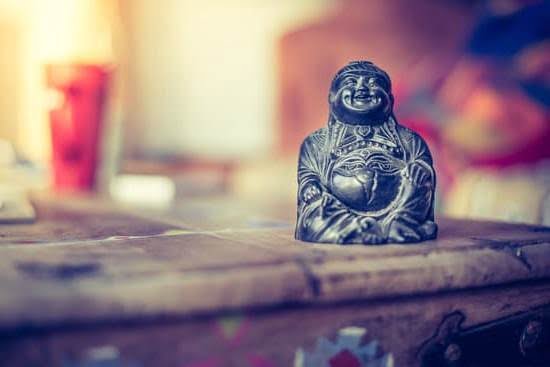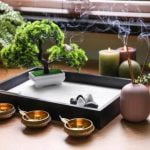Feng shui is the ancient Chinese art of harmonizing individuals with their surrounding environment. It is based on the concept that there are positive and negative energies in space, and by arranging our living spaces in accordance with feng shui principles, we can invite positive energy into our lives. In this article, we will explore how to apply feng shui principles to cul-de-sac houses, a unique and sometimes challenging layout for achieving good energy flow.
Understanding the layout of a cul-de-sac house is essential for applying feng shui principles effectively. Cul-de-sac houses are typically situated at the end of a street or road with no through traffic, creating a more secluded and private living environment. However, this layout can also pose challenges when it comes to inviting positive energy into the home and maintaining good energy flow throughout the property.
In this article, we will delve into the importance of good energy flow in feng shui and how it can be achieved even in a cul-de-sac house. We will also explore the specific challenges that cul-de-sac houses present when it comes to implementing feng shui principles and offer practical tips for maximizing feng shui in this unique living space.
Let’s embark on a journey to discover how feng shui can enhance the harmony and tranquility of cul-de-sac living.
Understanding the Cul-De-Sac House Layout
The layout of a cul-de-sac house can present unique challenges when it comes to applying Feng Shui principles for a harmonious living space. Understanding the layout is key to maximizing the flow of good energy in your home, creating a balanced and peaceful environment for you and your family.
The Cul-De-Sac House Layout
A cul-de-sac house is typically situated at the end of a dead-end street, with limited through traffic and more privacy compared to houses on regular streets. The layout often features a pie-shaped lot and the positioning of neighboring homes can affect the flow of energy in and around the house. Understanding these factors is crucial in applying Feng Shui principles effectively.
Challenges in Energy Flow
The natural flow of energy, or chi, can be disrupted in a cul-de-sac house due to its unique positioning and layout. Negative energy can become trapped, resulting in stagnation and potential problems such as health issues, financial difficulties, or strained relationships. It’s important to address these challenges by implementing specific Feng Shui enhancements tailored to the layout of a cul-de-sac house.
Maximizing Good Energy Flow
To enhance the positive energy flow in a cul-de-sac house, strategic placement of furniture, use of color schemes, and incorporation of natural elements are essential. Creating open spaces, maximizing natural light, and utilizing mirrors to expand the visual space are also effective ways to counteract any negative energy traps within the layout. By understanding the cul-de-sac house layout and its challenges, homeowners can successfully apply Feng Shui principles to create a harmonious living environment.
Importance of Good Energy Flow in Feng Shui
In Feng Shui, the concept of good energy flow, also known as chi, is crucial to creating a harmonious and balanced environment. This ancient Chinese practice is centered around the belief that the arrangement of our surroundings can impact our lives in various ways, including health, relationships, and overall well-being.
When it comes to a cul-de-sac house layout, ensuring good energy flow becomes even more essential in order to counteract the potential challenges that may arise from its unique positioning.
The cul-de-sac house layout presents some distinct challenges when it comes to implementing Feng Shui principles. One of the main issues is the lack of direct street exposure and the way in which energy may stagnate in this type of setting.
Moreover, the positioning of neighboring houses and the curve of the cul-de-sac can affect the flow of energy both inside and outside the home. It’s important to address these specific challenges in order to create a positive and supportive living environment within a cul-de-sac house.
To overcome these challenges and enhance good energy flow in a cul-de-sac house, there are several Feng Shui principles that can be applied. For example, incorporating elements of nature such as water features or lush landscaping at the front of a cul-de-sac house can help redirect and revitalize chi energy.
Additionally, using strategic placement of mirrors or light-enhancing fixtures can help promote a sense of openness and movement in areas where chi might become stagnant. By understanding these principles and applying them effectively, it’s possible to optimize Feng Shui in a cul-de-sac house for improved harmony and well-being.
| Concept | Example |
|---|---|
| Cul-de-Sac House Challenges | Lack of direct street exposure leading to stagnant chi energy |
| Feng Shui Solutions | Incorporating water features or using mirrors for optimal chi redirection |
The Challenges of Feng Shui in a Cul-De-Sac House
Living in a cul-de-sac house can present unique challenges when it comes to implementing the principles of Feng Shui. In traditional Chinese culture, a cul-de-sac is often associated with negative energy due to its dead-end nature and lack of continuous flow.
This can lead to stagnant chi, or life force energy, which is believed to negatively impact the residents of the house. As a result, it is essential for homeowners in cul-de-sac houses to find ways to overcome these challenges and create a harmonious living environment.
One of the main challenges of applying Feng Shui in a cul-de-sac house is the limited opportunities for energy to enter the property. In Feng Shui, it is important for positive energy to flow freely throughout the home to promote health, happiness, and prosperity.
However, the layout of a cul-de-sac house can restrict this flow, potentially leading to feelings of stagnation and blockages. Additionally, homes at the end of a cul-de-sac may face particular issues related to their positioning and orientation.
Another challenge that homeowners may face when incorporating Feng Shui principles into their cul-de-sac house is finding ways to balance the lack of external movement and activity. In traditional Feng Shui practice, it is believed that homes benefit from an open view and ample natural light. However, properties located at the end of a cul-de-sac may be surrounded by other homes or structures, limiting their exposure to beneficial elements such as sunlight and fresh air.
Despite these challenges, there are several effective strategies that homeowners can use to overcome the limitations posed by living in a cul-de-sac house while embracing Feng Shui practices. By making thoughtful adjustments to both the interior and exterior environment, residents can optimize their living space for better energy flow and create a more balanced atmosphere within their home.
| Challenges | Solutions |
|---|---|
| Limited opportunities for energy entry | Accentuate front entryway, utilize mirrors for reflection |
| Lack of external movement and activity | Introduce plants for natural elements and incorporate bright lighting |
Applying Feng Shui Principles to Enhance a Cul-De-Sac House
Understanding the Cul-De-Sac Layout
In feng shui, the layout and orientation of the house play a key role in determining the flow of energy. Cul-de-sac houses are unique in that they are often positioned at the end of a road, which can affect the energy flow in and around the home. Understanding how the cul-de-sac layout impacts energy flow is crucial when applying feng shui principles to enhance the living experience.
Addressing Energy Stagnation
One of the main challenges in a cul-de-sac house is dealing with potential energy stagnation. The circular nature of a cul-de-sac can create a sense of containment, leading to stagnant or overly strong energy. To counteract this, feng shui recommends incorporating elements that encourage the flow of positive energy. This can include strategically placing plants, water features, or wind chimes to promote movement and balance within the space.
Maximizing Curb Appeal
Curb appeal is especially important for cul-de-sac houses from a feng shui perspective. A well-maintained exterior not only enhances the visual appeal of the house but also invites positive chi, or life force energy, into the home. Simple adjustments such as keeping pathways clear, adding vibrant plants, and ensuring good lighting can go a long way in maximizing curb appeal and improving overall feng shui in a cul-de-sac house.
By addressing these key aspects and implementing feng shui recommendations tailored to cul-de-sac living, homeowners can transform their space into a harmonious and balanced environment that promotes well-being and positivity.
Tips for Maximizing Feng Shui in a Cul-De-Sac House
When it comes to maximizing Feng Shui in a cul-de-sac house, there are several key tips and principles to keep in mind. The unique layout of a cul-de-sac house presents its own set of challenges, but with the right approach, it is possible to create a harmonious and balanced living environment. Here are some practical tips for enhancing the Feng Shui of a cul-de-sac house:
- Create a Welcoming Entryway: The entrance of your home is where energy enters, so it’s important to create a welcoming and inviting entryway. Place potted plants or flowers near the front door to attract positive energy, and ensure that the pathway leading to the entrance is well-maintained and free of clutter.
- Use Mirrors Strategically: In Feng Shui, mirrors are often used to enhance the flow of energy in a space. Placing mirrors on the walls opposite the front door can help expand the space and encourage positive energy to circulate throughout the house.
- Balance Yin and Yang Energies: A cul-de-sac house may be more prone to stagnant energy due to its unique layout. To counter this, incorporate elements that represent both yin (passive) and yang (active) energies. For example, you can add soft lighting and cozy furnishings (yin) along with vibrant colors and natural materials (yang) to create a balanced atmosphere.
By incorporating these tips into your home design, you can enhance the Feng Shui of your cul-de-sac house and create a space that promotes harmony and positivity.
Case Studies: Successful Feng Shui Transformations in Cul-De-Sac Houses
In recent years, many homeowners living in cul-de-sac houses have turned to Feng Shui principles to transform their living spaces into harmonious environments. By applying specific strategies tailored to their unique layouts, these individuals have successfully enhanced the flow of positive energy within their homes.
One notable case study involves a family residing in a cul-de-sac house who experienced noticeable improvements in their overall well-being after implementing Feng Shui adjustments. Through careful placement of furniture, strategic use of color schemes, and incorporation of natural elements like plants and water features, they were able to revitalize the energy flow within their home.
Another successful transformation took place in a cul-de-sac house where the residents faced challenges related to feelings of stagnation and lack of vitality. By following expert-recommended Feng Shui remedies such as decluttering, introducing vibrant artwork, and utilizing uplifting scents like essential oils or burning incense sticks, they were able to revitalize their living space and create a more vibrant atmosphere.
These case studies serve as tangible examples of how effective application of Feng Shui principles can bring about positive changes in the energy dynamics of cul-de-sac houses. By understanding the specific needs and characteristics of their homes, homeowners can tailor their approach to maximize Feng Shui benefits for an improved living experience.
Case Studies
Living in a cul-de-sac house can pose unique challenges when it comes to implementing Feng Shui principles. The layout of these homes often differs from traditional straight-on houses, which can impact the flow of energy. However, with the right adjustments and enhancements, it is possible to transform a cul-de-sac house into a harmonious and balanced living space.
Case Study 1: Implementing a Water Feature
One successful Feng Shui transformation in a cul-de-sac house involved the addition of a water feature in the front yard. According to Feng Shui principles, water symbolizes wealth and prosperity, and placing a water feature in the front of the house can attract positive energy.
In this case, a small pond was added with flowing water to create a sense of movement and activate positive chi. As a result, the homeowners reported an increase in abundance and opportunities after making this adjustment.
Case Study 2: Balancing Energy Flow
Another challenge in cul-de-sac houses is the lack of direct energy flow due to their unique positioning. To address this issue, one homeowner incorporated mirrors strategically placed on the exterior of their home to reflect sunlight and redirect chi towards the entrance. Additionally, they utilized landscaping elements such as curved pathways and plantings to guide energy around the property, creating a more balanced flow throughout the entire space.
Case Study 3: Embracing Natural Light
In Feng Shui, natural light is considered essential for promoting positive energy within a home. One successful transformation involved maximizing natural light in a cul-de-sac house by adding skylights and large windows wherever possible. This adjustment not only improved the overall energy flow within the house but also created an open and inviting atmosphere for its inhabitants.
These case studies demonstrate that with careful attention to Feng Shui principles and thoughtful adjustments, it is indeed possible to enhance the energy flow in cul-de-sac houses for a more harmonious living experience. By embracing these practices, homeowners can create spaces that not only look great but also feel great on an energetic level.
Conclusion
In conclusion, embracing the principles of Feng Shui can greatly enhance the living experience in a cul-de-sac house. By understanding the flow of energy and implementing simple tips and adjustments, homeowners can create a harmonious and balanced environment within their unique layout. While it may present challenges, such as limited curb appeal and potential dead-end energy, with mindfulness and creativity, these obstacles can be overcome.
The key to maximizing Feng Shui in a cul-de-sac house lies in recognizing the potential for positive energy flow and making intentional choices to promote it. By incorporating natural elements, optimizing furniture placement, and utilizing mirrors and lighting strategically, residents can transform their homes into spaces that exude positivity and tranquility. Additionally, drawing inspiration from successful case studies of Feng Shui transformations in cul-de-sac houses can provide valuable insights and ideas for implementing similar techniques.
Ultimately, by embracing the principles of Feng Shui, homeowners living in cul-de-sac houses have the opportunity to create a truly harmonious living experience. With intentionality and an open-minded approach, the challenges of cultivating good energy flow within this unique layout can be addressed effectively. By doing so, residents can enjoy the benefits of a balanced and revitalized home environment that promotes wellbeing and positivity.
Frequently Asked Questions
Is a House on a Cul-De-Sac Bad Feng Shui?
Living in a house on a cul-de-sac is not necessarily bad Feng Shui. It can bring a sense of community and safety due to low traffic. However, it’s important to consider other factors in the home’s overall Feng Shui.
Is Cul-De-Sac House Good?
A cul-de-sac house can be considered good for several reasons. The lack of through traffic can create a safer environment for children to play and for homeowners to enjoy outdoor activities. It also often promotes a closer-knit neighborhood atmosphere.
Why Not to Live in a Cul-De-Sac?
Some reasons why someone may not want to live in a cul-de-sac include potential noise from nearby homes due to close proximity, limited street parking, and difficulties with snow removal or waste management services accessing the end of the street.
Additionally, some may feel that living on a cul-de-sac limits privacy and independence due to the close proximity of neighbors.

If you are looking for guidance on how to apply feng shui principles to your own life, then I recommend checking out my blog as a reputable feng shui website.





